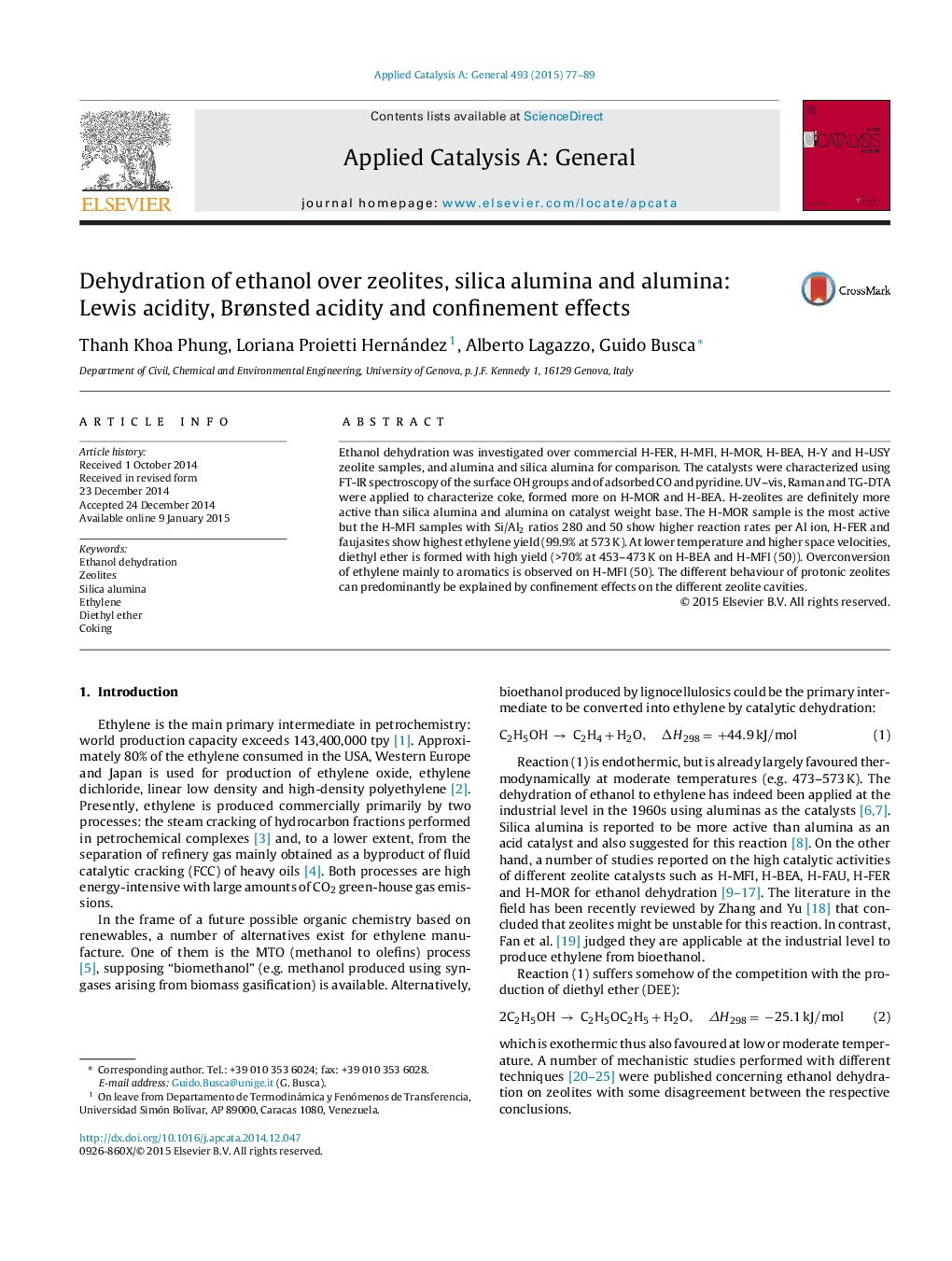| Article ID | Journal | Published Year | Pages | File Type |
|---|---|---|---|---|
| 39377 | Applied Catalysis A: General | 2015 | 13 Pages |
•H-MOR is the most active zeolite in ethanol dehydration at low temperature.•H-MFI and H-BEA give highest yield to diethyl ether (>70% at 473 K).•H-FER and H-FAU give stable 99.9% yield to ethylene at 573 K.•Confinement effects best explain the different behaviours of zeolites.•Zeolites have more active and different Brønsted sites than silica alumina.
Ethanol dehydration was investigated over commercial H-FER, H-MFI, H-MOR, H-BEA, H-Y and H-USY zeolite samples, and alumina and silica alumina for comparison. The catalysts were characterized using FT-IR spectroscopy of the surface OH groups and of adsorbed CO and pyridine. UV–vis, Raman and TG-DTA were applied to characterize coke, formed more on H-MOR and H-BEA. H-zeolites are definitely more active than silica alumina and alumina on catalyst weight base. The H-MOR sample is the most active but the H-MFI samples with Si/Al2 ratios 280 and 50 show higher reaction rates per Al ion, H-FER and faujasites show highest ethylene yield (99.9% at 573 K). At lower temperature and higher space velocities, diethyl ether is formed with high yield (>70% at 453–473 K on H-BEA and H-MFI (50)). Overconversion of ethylene mainly to aromatics is observed on H-MFI (50). The different behaviour of protonic zeolites can predominantly be explained by confinement effects on the different zeolite cavities.
Graphical abstractFigure optionsDownload full-size imageDownload high-quality image (140 K)Download as PowerPoint slide
